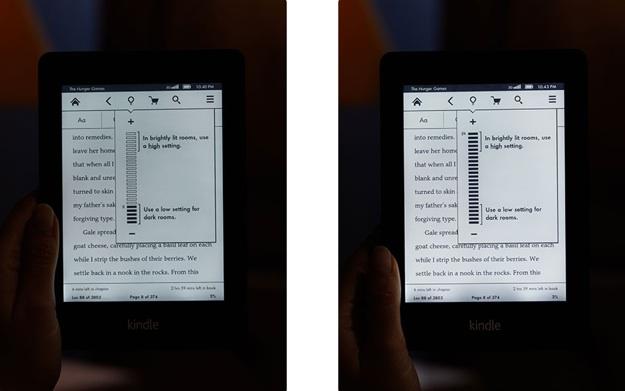 Amazon decided to be refreshingly upfront when faced with a growing number of complaints pertaining to the new Kindle Paperwhite. As you may know, the Paperwhite is the first Kindle to have a self-illuminating screen that lets you read in the dark without a separate accessory.
Amazon decided to be refreshingly upfront when faced with a growing number of complaints pertaining to the new Kindle Paperwhite. As you may know, the Paperwhite is the first Kindle to have a self-illuminating screen that lets you read in the dark without a separate accessory.
However, as more and more people begin to use the new device, complaints have been turning up in Amazon forums, specifically targeting the uneven lighting provided by the device under certain conditions.
A quick Google search of “Kindle Paperwhite problems” turns up a wide range of screen issues:
“Noticed the screen had ‘light spots’ all over the display, think looking at the night sky and seeing the stars.”
“I have a bright spot on mine too, as well as annoying screen blotches. I’m sending it back for a refund instead of getting on the replacement merry-go-round.”
“This is my first kindle and so far I’m disappointed. The dark spots are bothersome and I don’t like how blue the ‘white’ is.”
But rather than ignore the public’s complaints, Amazon decided to address the issues head-on through a public statement. The online retailer acknowledged the Paperwhite can produce uneven illumination when used improperly in particular lighting conditions. However, Amazon defended themselves, saying the unevenness only affected a small portion of the screen that didn’t hold text anyway. Amazon also included examples of how the screen should look in Kindle Fire HD‘s support of both features.
Whether the Paperwhite’s issues stem from the limits of its technology or oversights by the company, we respect that Amazon has acknowledged the shortcomings of its newest device. You can read the full statement below:
Kindle Paperwhite is the best Kindle we’ve ever made by far, but there are certain limitations and changes from prior generations that we want you to know about. Kindle Paperwhite does not have audio or Text-to-Speech. This makes the device smaller and lighter than it would otherwise be. Audio and an improved Text-to-Speech engine are supported on Kindle Fire and Kindle Fire HD.
Under certain lighting conditions, the illumination at the bottom of the screen from the built-in light is not perfectly even. See examples of how the screen looks in different lighting conditions. These variations are normal and are located primarily in the margin where text is not present. The illumination is more even than that created by a book light or lighted cover. The contrast, resolution and illumination of the Paperwhite display is a significant step-up from our prior generation.
The Kindle Paperwhite has 2 GB of storage. Some previous Kindle models had 4GB of storage. 2GB allows you to hold up to 1,100 books locally on your device. In addition, your entire Kindle library is stored for free in the Amazon cloud, and you can easily move books from the cloud onto your device.
Do you have a Kindle Paperwhite? Have you had any issues with it or is it performing as expected?


